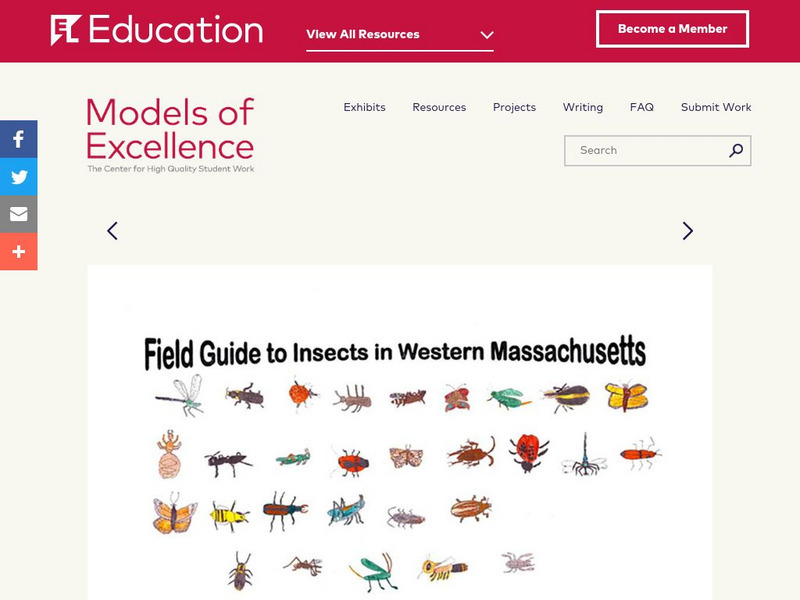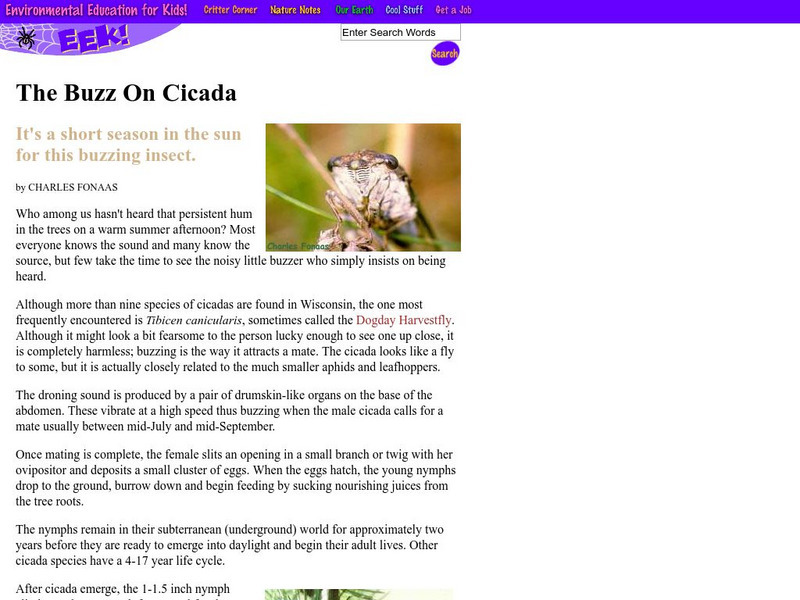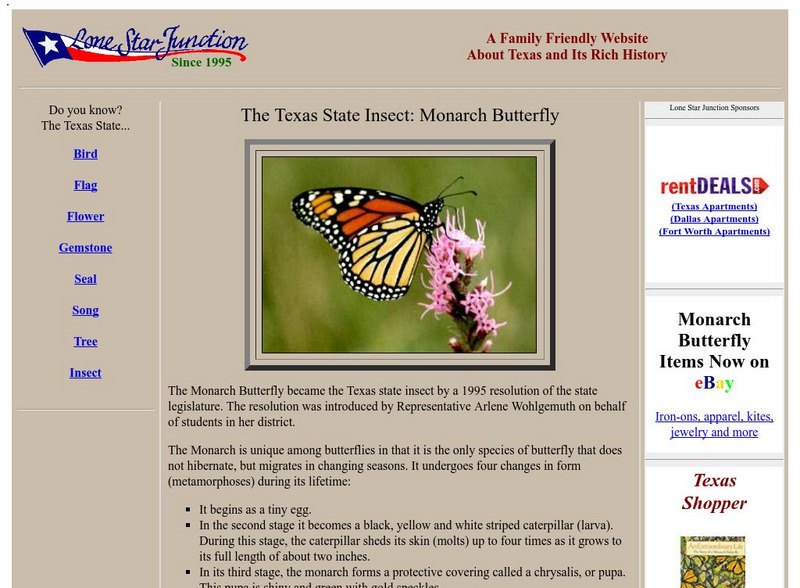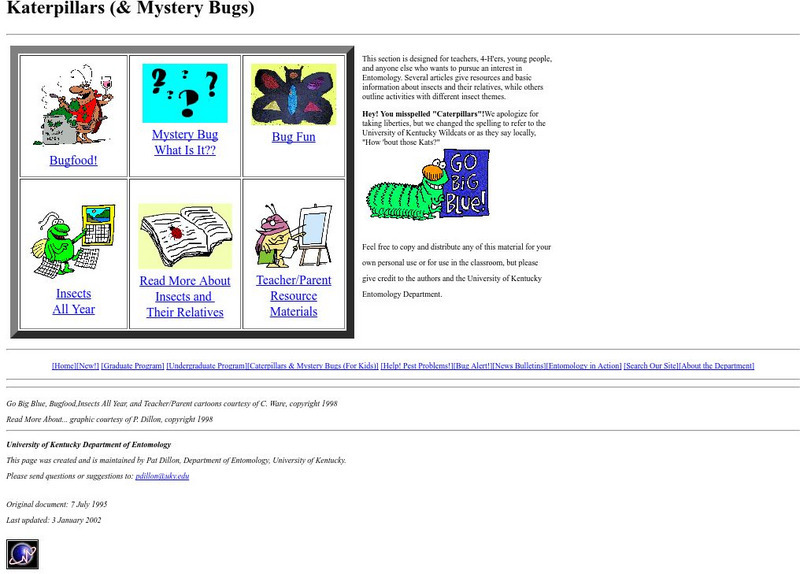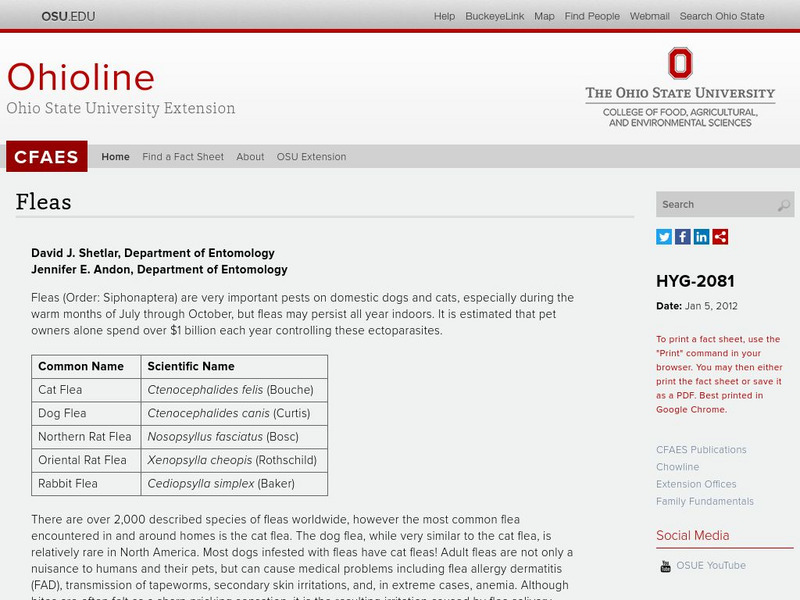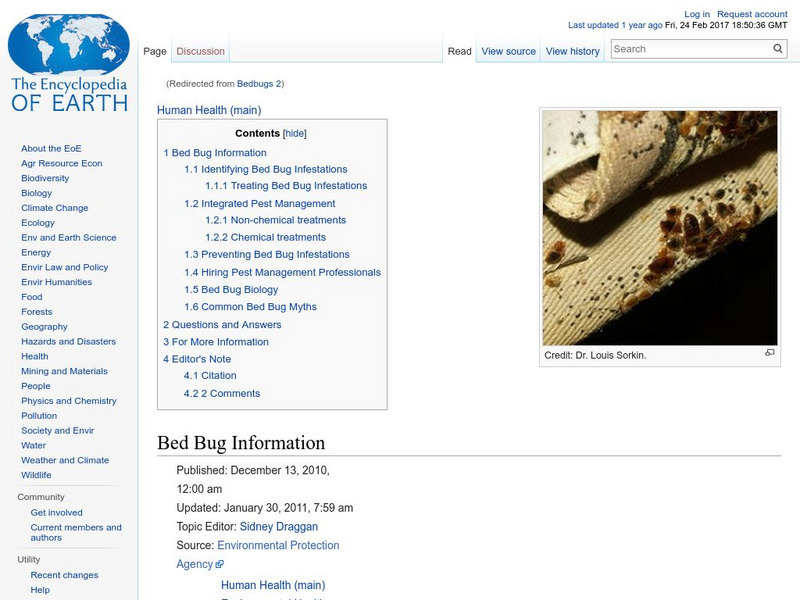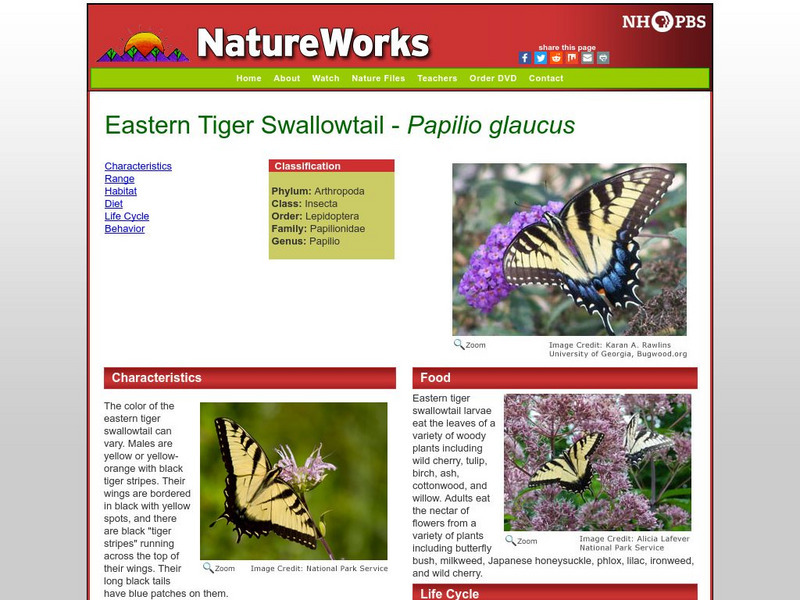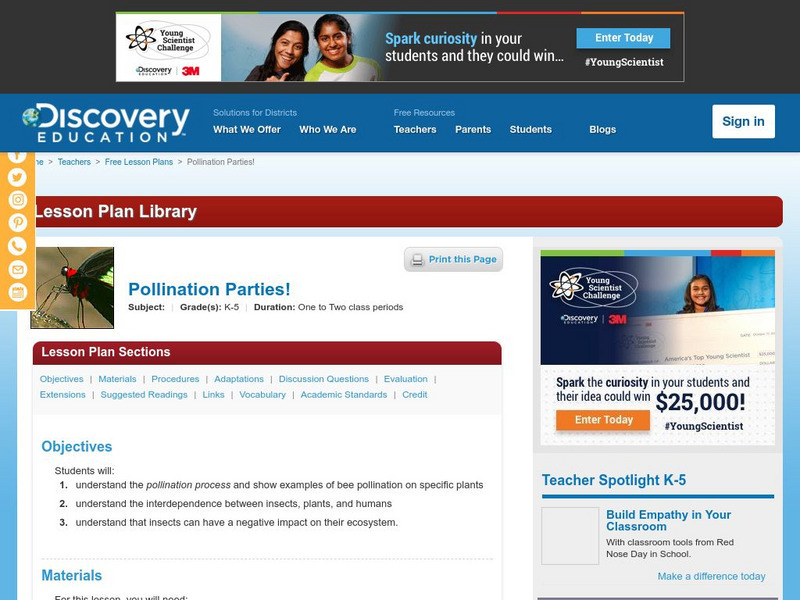Other
Iowa State University: Bug Guide
Here's an easy to use guide for identifying insects. All you have to do is click on the image that looks like your bug, then read all about it! There's lots of information about the insect; including food, life cycle, range, and habitat.
Museums Victoria
Museum Victoria: Bugs
Students learn what insects are, how they live, how they find food, how they defend themselves, and how they affect humans. Organized into several articles accompanied by high-quality photos and video, this online exhibit provides...
Texas A&M University
Texas A&m University: Field Guide to Common Texas Insects: Silverfish
Read a description of the silverfish and its cousin, the firebrat. Learn of their habitat, food source and life cycle.
Iowa State University
Iowa State University: Iowa Insect Information Notes Ticks
Here are 3 articles about the American Dog Tick, Bat Tick, and the Lone Star Tick. Each includes descriptions, life cycles, and ways to control them as pests.
EL Education
El Education: Field Guide to Insects in Western Massachusetts
This field guide was created by 2nd graders in Springfield, Massachusetts. It was part of a two-month Learning Expedition that included field observation and collection, classroom experimentation and research, reading from books and...
Iowa State University
Iowa State University: Iowa Insect Information Notes Flies
Flies are almost always known as pests, especially the types called gnats that bite! These information sheets provide descriptions of several types of flies as well as life cycles and ways to reduce these annoying bugs.
Australian Museum
Australian Museum: Beetles
This thorough site provides a general overview of beetles and focuses on topics such as habitat, anatomy, life cycle, feeding, predation and defense, and beetles as pests.
Environmental Education for Kids
Eek!: Alien Profile: Gypsy Moth
Learn how the gypsy moth first came to North America, how it spread, how to identify it, its life cycle, the damage it causes, and what can be done to fight this invasive species.
Palomar Community College District
The Amazing Insects Known as Beetles
This interesting site provides a number of facts about beetles and takes a close look at the Hercules beetle, Bombardier beetle, June beetle, and more. Vibrant beetle pictures are also part of this site.
Environmental Education for Kids
Eek!: Cicada
This site provides a brief but concise description of this interesting insect. Grades 4-8.
Lone Star Junction
Lone Star Junction: The Texas State Insect: Monarch Butterfly
Some facts about the monarch butterfly, which is the state insect of Texas.
Globio
Glossopedia: Ants
Ants are small, but important insects. Ant anatomy, reproduction, life cycle and community are discussed. Impact on the environment and humans is also described.
University of Kentucky
University of Kentucky: "Katerpillars" (& Mystery Bugs)
For younger students, these insect-themed activities, treats, and crafts also feature teacher resources and book references.
Ohio State University
Osu: Flea Fact Sheet
A fact sheet on fleas from the Ohio State University Extension lists scientific names, identifying characteristics, and pictures.
Canadian Wildlife Federation
Hinterland Who's Who: Mosquito
Get the facts about mosquito. Besides finding a detailed description of these pesky insects, you'll also learn about some of their unique facts and characteristics. Also included in this Insect Fact Sheet on mosquitoes is information on...
Encyclopedia of Earth
Encyclopedia of Earth: Entomology: Bed Bug Information
Detailed information about bed bugs: how to identify them, treating and preventing infestations, physical features, life cycle, and misconceptions about bed bugs. Includes links to additional resources. (Published: December 13, 2010)
Curated OER
Life Cycle
Insect rhymes, crafts, coloring printouts, and quizzes are collected by Enchanted Learning. Color pictures, diagrams, and charts are included.
PBS
Nh Pbs: Nature Works: Eastern Tiger Swallowtail
Explore the world of the Eastern Tiger Swallowtail when you visit this resource. The content of this site includes a look at this species' characteristics, range, habitat, food, and more.
Saint Louis Zoo
Saint Louis Zoo: Monarch Butterfly
Learn animal facts about the appearance, behavior, life cycle, and diet of the monarch butterfly.
University of Wisconsin
The Why Files: Mosquito Bytes
A general description of the life cycle of the mosquito. Includes inforation on why they need blood and how they breed.
Discovery Education
Discovery Education: Pollination Parties
This activity helps young scholars understand the concept of pollination. Objectives, materials, procedures, adaptations, discussion questions, evaluation, extensions, suggested readings, links, vocabulary, and academic standards are all...
Other
Tom Moore, Mulrennan Research Center/ Mosquito
The first section describes the general characteristics of the mosquito
Museums Victoria
Museum Victoria: Bugs: Glossary
Glossary of terms commonly used to describe bugs, their habitat, and their life cycle.
Purdue University
Purdue University: Medical Entomology: Horse and Deer Flies
Horse flies and deer flies are significant pests to both humans and animals. This site describes their life cycles, feeding patterns, and some methods of controlling them.





